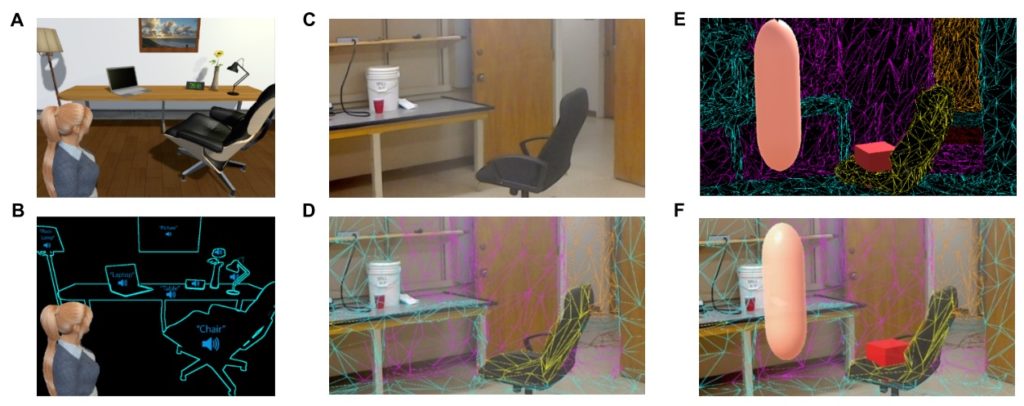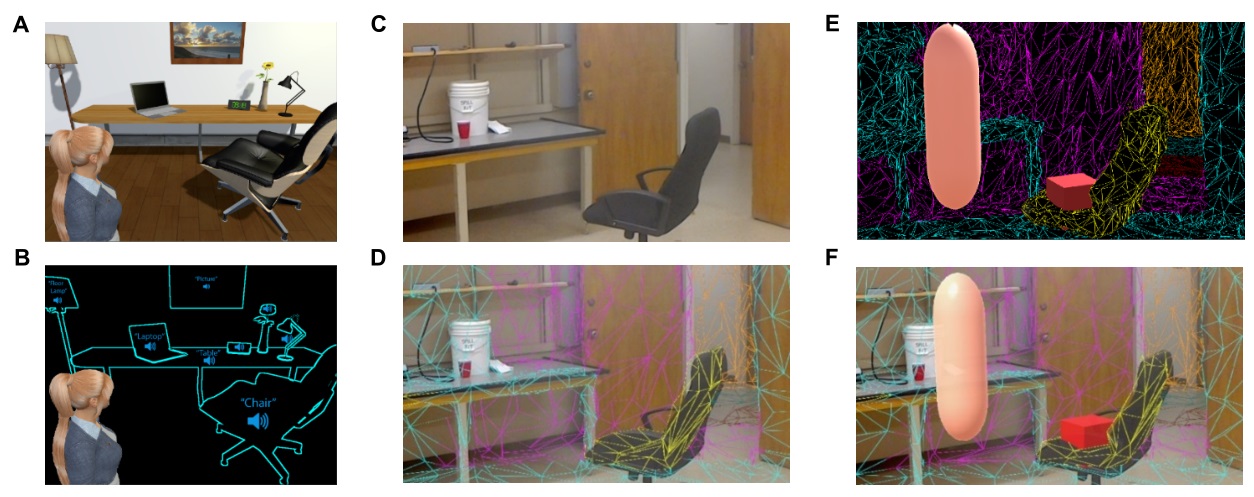
Microsoft’s HoloLens has an impressive ability to quickly sense its surroundings, but limiting it to displaying emails or game characters on them would show a lack of creativity. New research shows that it works quite well as a visual prosthesis for the vision impaired, not relaying actual visual data but guiding them in real time with audio cues and instructions.
The researchers, from CalTech and University of Southern California, first argue that restoring vision is at present simply not a realistic goal, but that replacing the perception portion of vision isn’t necessary to replicate the practical portion. After all, if you can tell where a chair is, you don’t need to see it to avoid it, right?
Crunching visual data and producing a map of high-level features like walls, obstacles, and doors is one of the core capabilities of the HoloLens, so the team decided to to let it do its thing and recreate the environment for the user from these extracted features.
They designed the system around sound, naturally. Every major object and feature can tell the user where it is, either via voice or sound. Walls, for instance, hiss (presumably a white noise, not a …read more
Source:: TechCrunch Gadgets

 Previous post
Previous post
 Next post
Next post